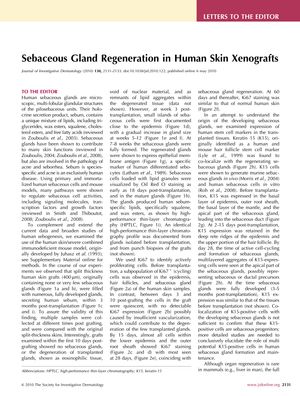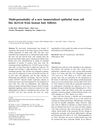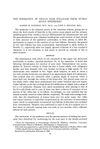Sebaceous Gland Regeneration in Human Skin Xenografts
May 2010
in “
Journal of Investigative Dermatology
”

TLDR Human sebaceous glands can grow back in skin grafts on mice and work like normal human glands.
The study conducted by Johnson & Johnson employees demonstrated that human sebaceous glands can regenerate in split-thickness human skin grafts transplanted onto immunodeficient mice. Within 3 months, the grafts developed numerous functional sebaceous glands that secreted human sebum and expressed markers of differentiated sebocytes, such as epithelial membrane antigen. The glands also produced human-specific lipids, including squalene and wax esters. Cell proliferation in the grafts was observed to resume as early as 3 days post-transplantation, with actively proliferating cells present in the developing glands by day 28. The presence of the stem cell marker Keratin 15 (K15) in association with the regenerating glands suggests its potential role in gland formation. This research provides a useful model for further understanding sebaceous gland biology and the factors that promote gland regeneration.



